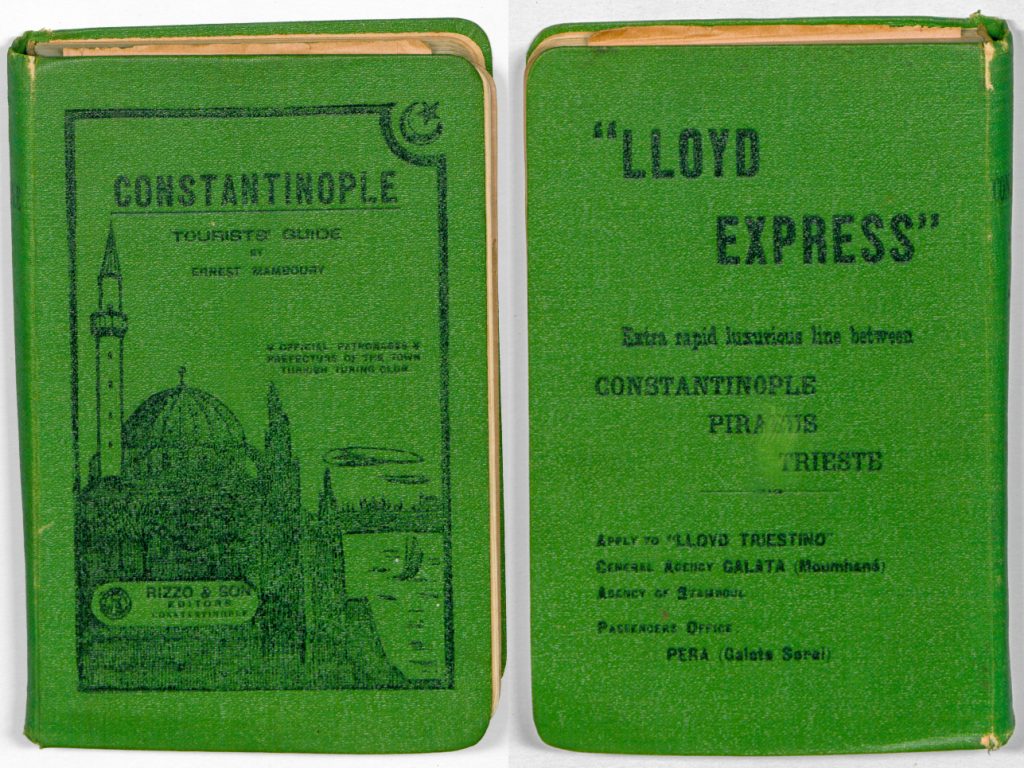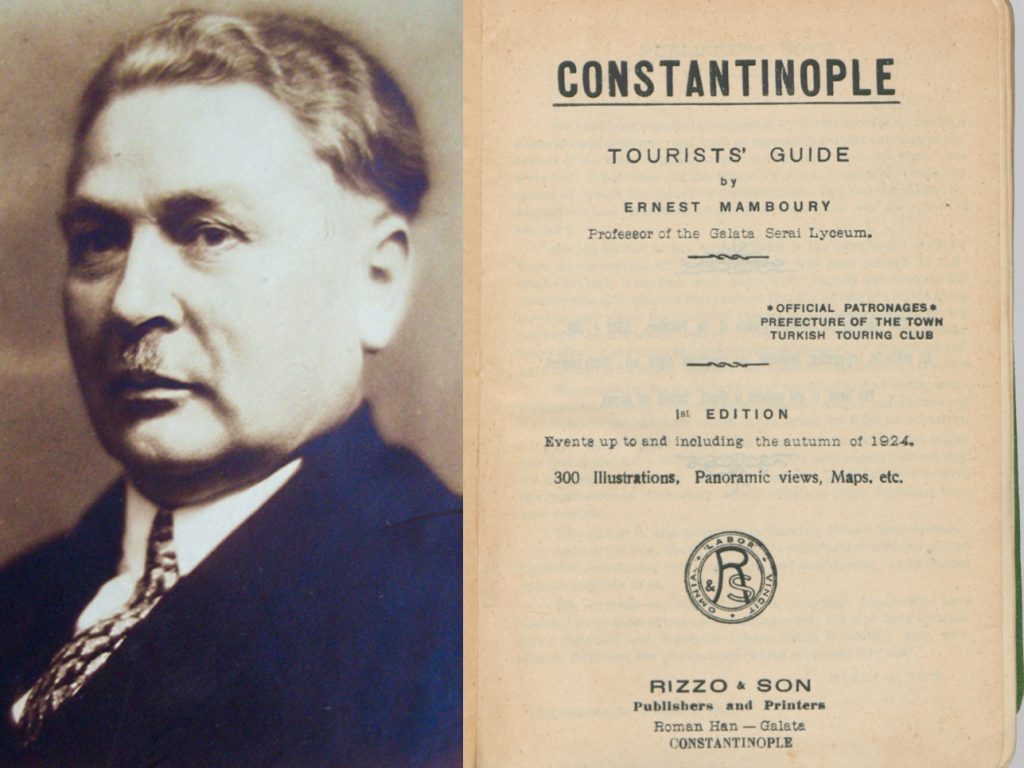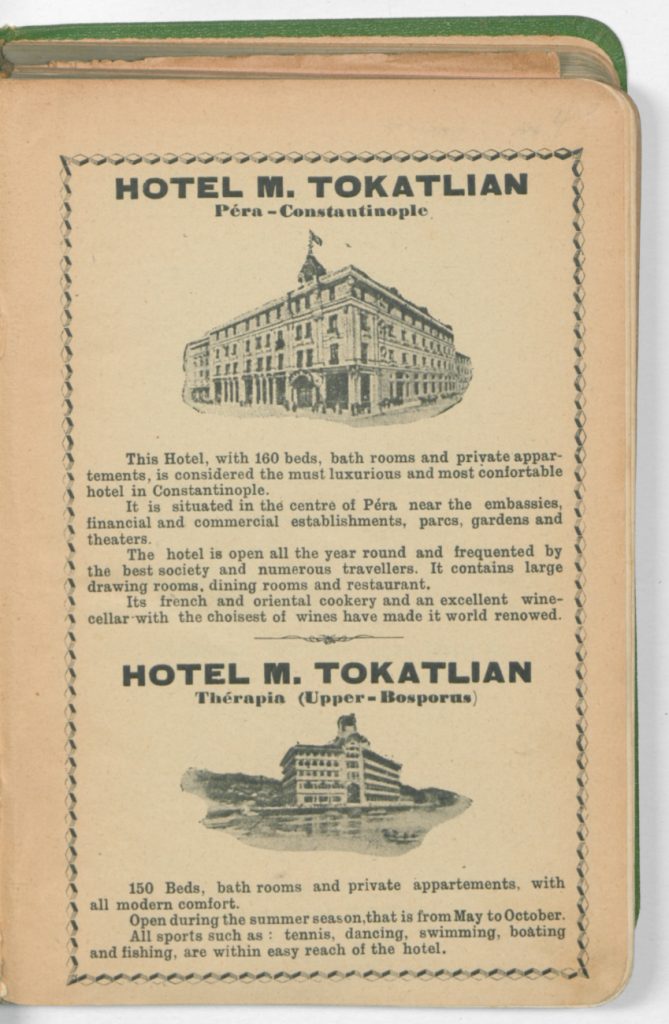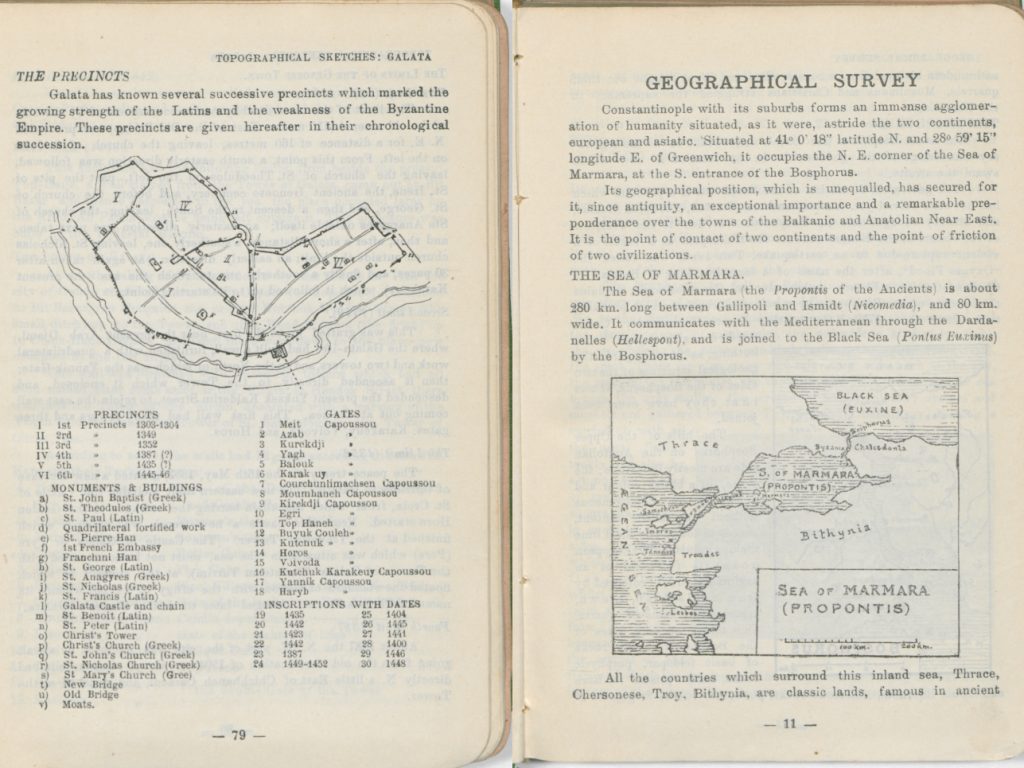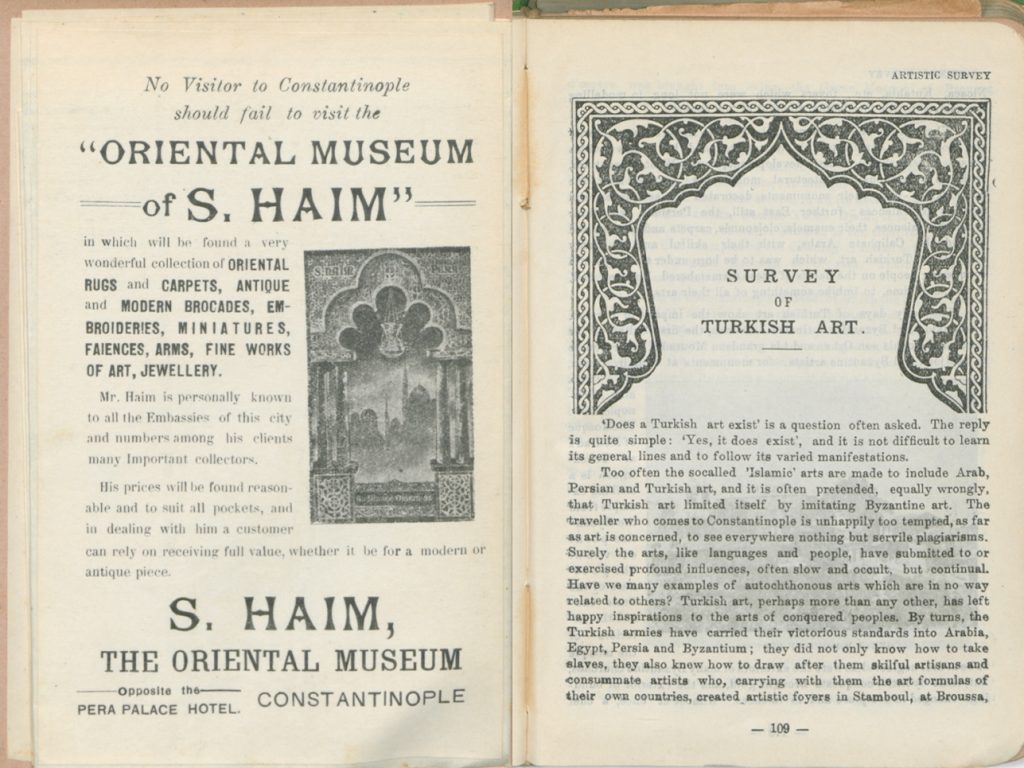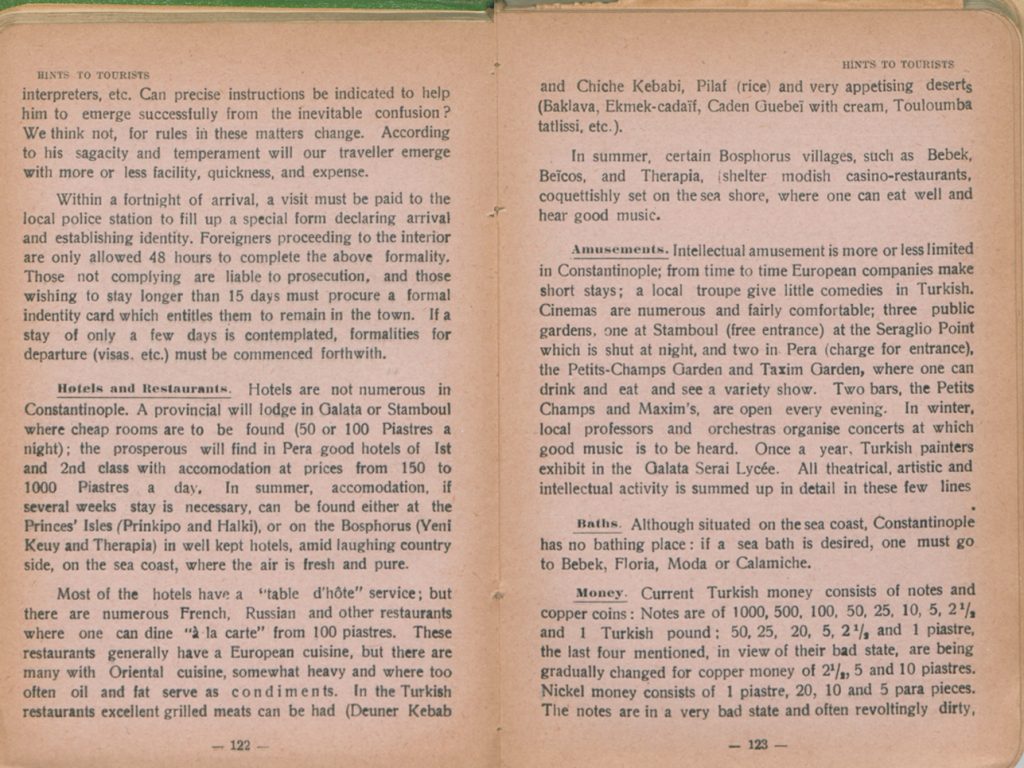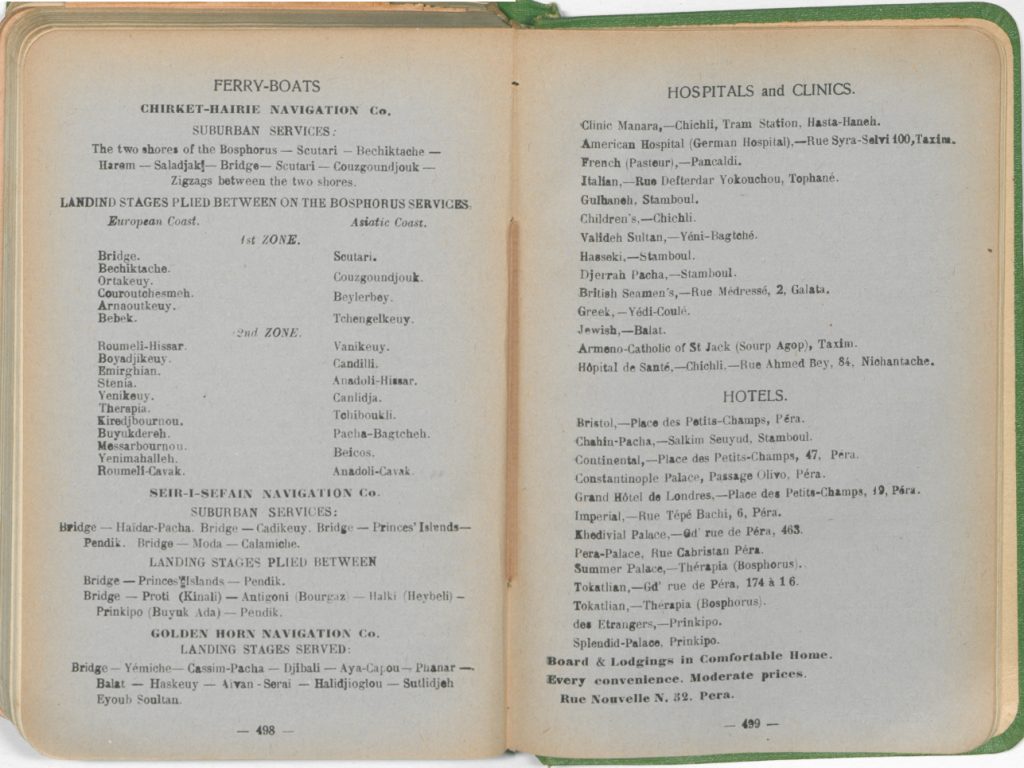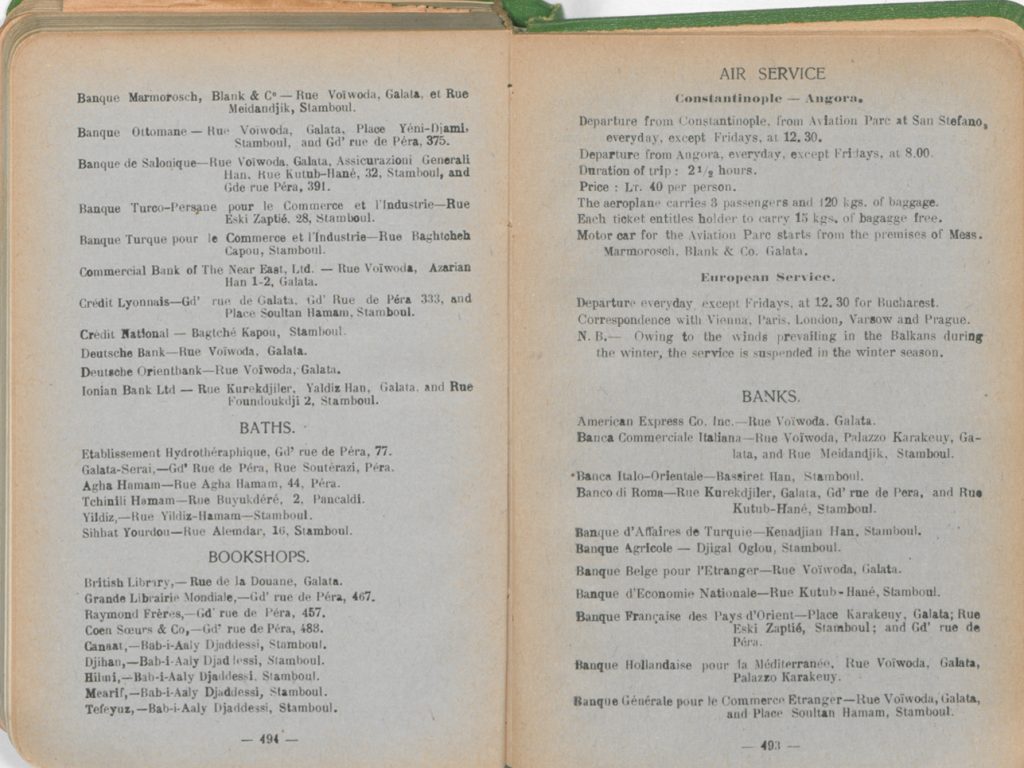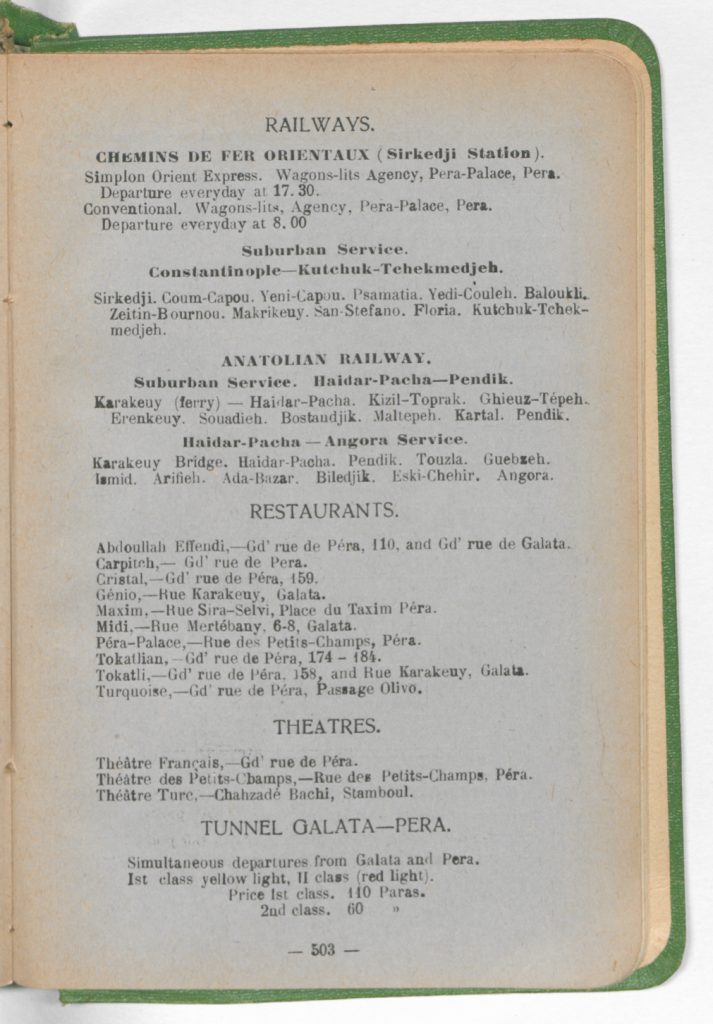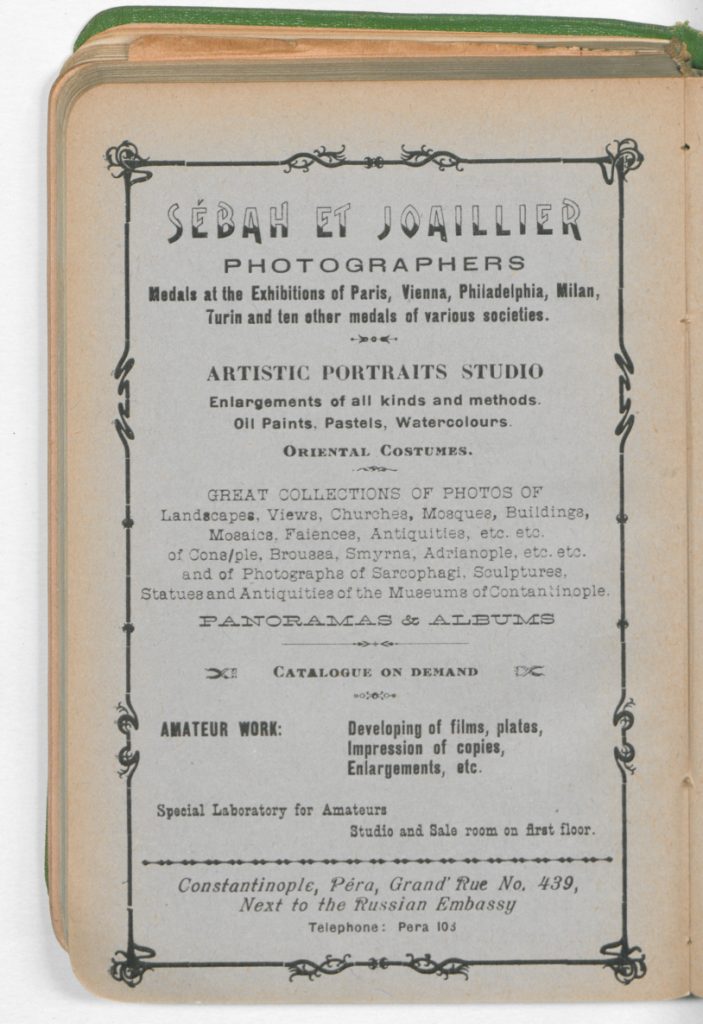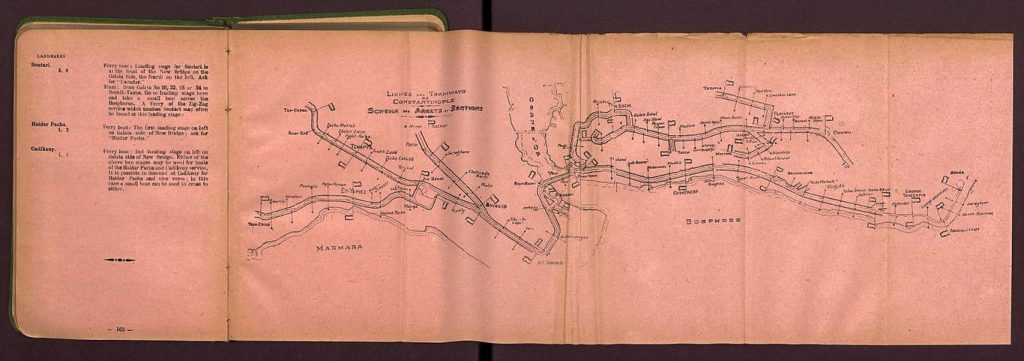Istanbul from the Footsteps of Travelers, Through the Eyes of The Tourist Guides! II – Constantinople Tourist Guide, Ernest Mamboury
In the second part of our exhibition “Seyyahların İzinden, Rehberlerin Gözünden İstanbul!” we will present the guide written by Swiss Ernest Mamboury, who came to Istanbul in 1909, fell in love with this city and settled in Istanbul with his family. Mamboury, who taught Geometric Design and French at Mekteb-i Sanayi and then at Galatasaray High School since 1921, also helped Western Archaeologists who were doing research in Türkiye. [1] This work of Mamboury is fundamentally different from its counterparts, in that it provides very solid information about the Byzantine monuments in Istanbul. In 1921-1923, he participated in the researches made in the area between Sarayburnu and Ahırkapı under the administration of archaeologist R. Demangel.
After 1925, he participated in some of the researches carried out by the Istanbul Archeology Museums Directorate and drew the plans of the unearthed artifacts. The first guide of Mamboury, whose most important publications are scientific tourist guides, was published in French in 1925 under the name “Constantinople, Guide Touristique”. The guide, which was published in Turkish under the name of “Istanbul, Directory-i Seyyahîn” in the same year, later made its second edition in French in 1929. The book, which received great acclaim, was also published in German (“Stambul-Reiseführer”, Istanbul 1930). [2] The guide which was published in 1925 and is included in our exhibition, it includes information about Istanbul’s history, geographical features, races, sects, Byzantine and Ottoman Art, units of measurement, and sea and land transportation. Mamboury enriched his guides with a panaroma of İstanbul, a tram map, a colorful İstanbul map, an İstanbul conquest map and İstanbul gates maps. It then presents a travel programme for travelers who spend 1,2 and 8 days in Istanbul, and in the last section, it includes details about the main Turkish and Byzantine monuments in Istanbul.[3]
While Ernest Mamboury presents the beauties of the city to travelers and shares practical information about the city, he managed to create a valuable work, depicting Istanbul to future generations. As the “Following the Footsteps of Travelers…” project team, we wish you will manage to discover Istanbul step by step with our digital exhibition consisting of these two guides which are included in the Suna Kıraç Library Rare Material Collection.
